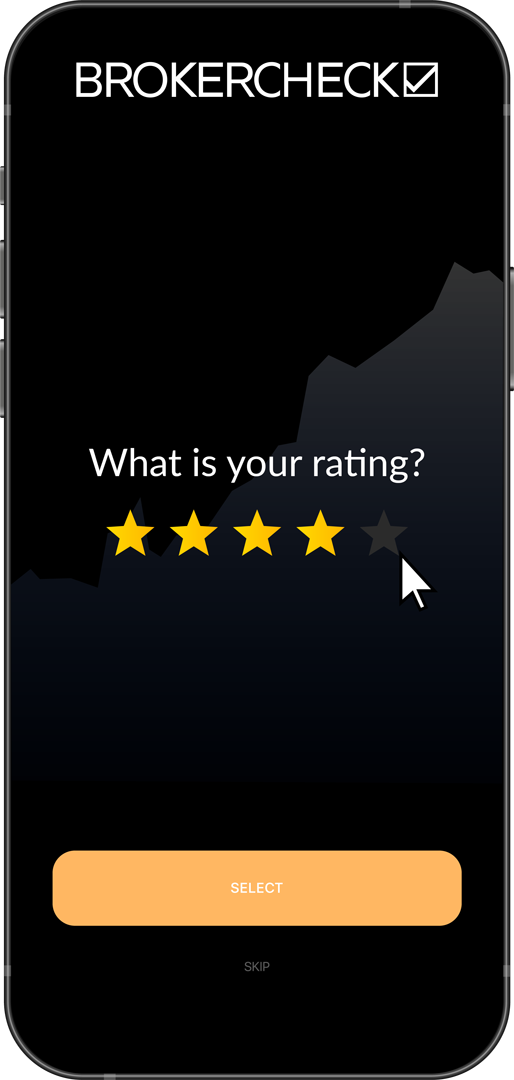1. Overview of Rob Booker’s Missed Pivot Points Indicator
Pivot points are a staple in the toolkit of many traders, serving as a predictive indicator of market movement. They are calculated using the high, low, and close prices of the previous trading session. These points help traders identify potential support and resistance levels, which are key areas where the price of an asset might experience a reversal or pause.

1.1 What Makes Missed Pivot Points Unique
Rob Booker’s Missed Pivot Points Indicator adds an intriguing twist to the traditional concept of pivot points. This indicator focuses on pivot points that were not tested by the market during a trading session. A “missed” pivot point is essentially a pivot level that the price did not reach or “miss” in previous sessions. The underlying theory suggests that the market has a memory and tends to return to these missed levels, providing traders with potential opportunities for entry or exit.
1.2 The Significance of Missed Pivot Points
Missed pivot points are significant because they represent unfulfilled market objectives. In many cases, when a pivot point is missed, it indicates that there might be unfinished business at that level. Traders can use this information to anticipate potential market moves towards these points in the future. It’s a way of identifying targets that the market may aim to test eventually, offering a strategic advantage in planning trades.
1.3 Application in Trading
Traders use Missed Pivot Points in conjunction with other indicators to refine their trading strategies. This indicator is especially useful for swing traders and day traders who rely on short-term price movements and patterns. By highlighting potential reversal points that the market has not yet tested, traders can position themselves to take advantage of upcoming price movements.
1.4 Advantages and Limitations
Advantages:
- Predictive Nature: Provides foresight into potential future movements based on past price behavior.
- Strategic Planning: Helps in setting precise targets for entry and exit, improving trade planning.
- Versatility: Can be used in various market conditions and with different trading instruments.
Limitations:
- Lagging Indicator: As it is based on historical data, there can be a delay in signal generation.
- Market Volatility: May not always accurately predict market movements in highly volatile conditions.
- Complementary Use: Best used in conjunction with other indicators for more reliable signals.
| Key Element | Description |
|---|---|
| Indicator Type | Predictive, based on historical price data |
| Primary Use | Identifying potential support and resistance levels from missed pivot points |
| Calculation Basis | High, low, and close prices of previous sessions |
| Significance | Indicates potential market movement towards untested levels |
| Application | Useful for swing and day traders for planning entry/exit points |
2. Calculation Process of Rob Booker’s Missed Pivot Points
Rob Booker’s Missed Pivot Points Indicator is an innovative tool used by traders to identify potential turning points in the market based on past pivot points that were not tested by price action. Understanding how this indicator calculates these points is crucial for traders of all levels. In this section, we will break down the calculation process in a step-by-step manner, ensuring that beginners can grasp the concept easily.
2.1 Understanding Pivot Points
Before we dive into the missed pivot points, it’s essential to understand the basic concept of pivot points. Pivot points are predictive indicators that were traditionally used by floor traders in the stock and commodities markets to identify potential support and resistance levels. They are calculated using the high, low, and close prices of the previous trading session.
2.2 The Basic Calculation
The calculation of a standard pivot point (P) is straightforward and is the starting point for calculating missed pivot points. The formula for a standard pivot point is:
P = (Highprevious + Lowprevious + Closeprevious) / 3
This formula gives us the central pivot point, which is the average of the high, low, and close prices from the previous trading session.
2.3 Identifying Missed Pivot Points
Missed pivot points are those pivot levels that price did not reach or “test” during the trading session after they were calculated. Rob Booker’s indicator tracks these untested pivot points over time because they often turn into significant levels of support or resistance in the future.
The calculation process for identifying missed pivot points involves:
- Calculating the daily pivot points using the formula mentioned above.
- Monitoring the price action in the subsequent sessions to see if it reaches or tests these pivot points.
- Marking the pivot points that were not tested by the price as missed pivot points.
2.4 Algorithmic Approach
In practice, the Missed Pivot Points Indicator automates this process by:
- Using historical data to calculate pivot points for each past session.
- Analyzing the following days’ price movements to identify whether the pivot was tested.
- Highlighting missed pivot points on the chart for traders to see potential support and resistance areas.
This automation allows traders to quickly identify these critical levels without manually sifting through past data.
| Term | Definition |
|---|---|
| Pivot Point (P) | The average of the high, low, and close prices from the previous trading session. |
| Missed Pivot Points | Pivot points from past sessions that were not reached or tested by price action. |
| Calculation Formula | P = (Highprevious + Lowprevious + Closeprevious) / 3 |
| Importance | Serve as potential levels of support or resistance in future trading sessions. |
3. Optimal Values for Setup in Different Timeframes
Selecting the optimal values for setting up Rob Booker’s Missed Pivot Points Indicator is crucial for maximizing its effectiveness across different timeframes. This section aims to guide traders through the process of adjusting the indicator’s parameters to suit various trading strategies, whether you’re a day trader, swing trader, or long-term investor.
3.1 For Day Trading
Day traders operate on a very short timeframe, often looking to enter and exit trades within the same trading day. For these traders, the focus is on minute (M1, M5) to hourly (H1) charts.
- Timeframe: M5 (5-minute) or M15 (15-minute) charts.
- Pivot Point Calculation: Use the previous day’s high, low, and close prices to calculate the daily pivot points.
- Missed Pivot Points Lookback Period: A lookback period of 1-5 days is typically sufficient, as day traders prioritize recent market movements.
3.2 For Swing Trading
Swing traders hold positions for several days to weeks, aiming to capture short- to medium-term market trends. They benefit from focusing on hourly (H1) to daily (D1) charts.
- Timeframe: H4 (4-hour) or D1 (daily) charts.
- Pivot Point Calculation: Weekly pivot points can be more relevant, calculated using the high, low, and close prices of the previous week.
- Missed Pivot Points Lookback Period: A lookback period of 5-10 days can provide a broader perspective on market sentiment and potential reversal points.
3.3 For Long-term Investing
Long-term investors aim for gains over months to years and may find the missed pivot points concept applicable on a much broader scale.
- Timeframe: W1 (weekly) or MN (monthly) charts.
- Pivot Point Calculation: Monthly or even quarterly pivot points, calculated using the high, low, and close prices of the respective period.
- Missed Pivot Points Lookback Period: A lookback period of 3-6 months or more can help identify significant levels of support or resistance that could impact long-term trends.
3.4. Key Considerations
- Adjustment for Volatility: Traders should consider the current market volatility when setting up the indicator. Higher volatility may warrant broader lookback periods.
- Personal Trading Style: The optimal setup values may vary depending on individual trading styles and risk tolerance. It’s essential to backtest different settings to find the most suitable configuration.

| Trading Style | Optimal Timeframe | Pivot Point Calculation | Lookback Period |
|---|---|---|---|
| Day Trading | M5 or M15 | Previous day’s prices | 1-5 days |
| Swing Trading | H4 or D1 | Previous week’s prices | 5-10 days |
| Long-term Investing | W1 or MN | Previous month’s or quarter’s prices | 3-6 months or more |
4. Interpretation and Trading Strategies
Interpreting Rob Booker’s Missed Pivot Points and integrating them into trading strategies can significantly enhance a trader’s ability to spot potential reversal points and manage trades more effectively. This section will explain how to interpret missed pivot points and suggest strategies for using them in trading, catering to both beginners and advanced traders.
4.1 Interpreting Missed Pivot Points
Missed pivot points serve as potential indicators of unfulfilled market momentum and can act as future areas of support or resistance. When the price approaches a missed pivot point, traders should watch for:
- Price Action Reversals: A reversal pattern near a missed pivot point can signal a strong potential for a change in price direction.
- Volume Increase: An uptick in trading volume as the price nears the missed pivot point may validate its significance as a support or resistance level.

4.2 Trading Strategies
4.2.1 Strategy for Day Traders
- Setup: Focus on M5 to M15 charts with missed pivot points identified from the previous 1-5 days.
- Entry Signal: When the price approaches a missed pivot point, look for reversal candlestick patterns (e.g., hammer, engulfing patterns) as confirmation.
- Exit Signal: Set take-profit near the next missed pivot point or a pre-defined resistance/support level. Use a tight stop-loss just beyond the recent high/low before the reversal.
4.2.2 Strategy for Swing Traders
- Setup: Use H4 to D1 charts, identifying missed pivot points from the past 5-10 days.
- Entry Signal: Await a confluence of indicators (e.g., RSI divergence, MACD crossover) near a missed pivot point to enter a trade.
- Exit Signal: Take profit at significant resistance/support levels or the next missed pivot point. A stop-loss should be placed to minimize risk, considering the swing trader’s wider price range.
4.2.3 Strategy for Long-term Investors
- Setup: Analyze W1 to MN charts with missed pivot points over the last 3-6 months.
- Entry Signal: Long-term trend confirmations (e.g., breakout from a long-term consolidation pattern) near a missed pivot point can signal an entry.
- Exit Signal: Set profit targets based on major historical resistance/support levels or significant missed pivot points. The stop-loss should account for larger market swings.
4.3. Key Considerations
- Risk Management: Always incorporate risk management strategies, adjusting stop-loss and take-profit levels according to the trade setup and your risk tolerance.
- Supplementary Indicators: While missed pivot points can be powerful, combining them with other indicators (e.g., moving averages, RSI) can provide a more robust trading strategy.
- Backtesting: Before applying these strategies live, backtest them on historical data to ensure they align with your trading style and objectives.
| Trader Type | Chart Timeframe | Entry Signal | Exit Signal |
|---|---|---|---|
| Day Trader | M5 to M15 | Reversal patterns at missed pivot point | Next pivot point or defined support/resistance |
| Swing Trader | H4 to D1 | Indicator confluence at missed pivot point | Significant resistance/support or next pivot |
| Long-term Investor | W1 to MN | Long-term trend confirmation near pivot | Major historical levels or significant pivot |
5. Combination with Other Indicators
Integrating Rob Booker’s Missed Pivot Points with other technical indicators can create a more comprehensive and effective trading strategy. This section will explore how missed pivot points can be combined with popular indicators to enhance market analysis, entry and exit decision-making, and risk management.
5.1 Combining with Moving Averages
Moving Averages (MAs) are among the most widely used indicators for identifying trends. Combining MAs with missed pivot points provides a dual approach to spotting potential reversal points and confirming the overall market trend.
- Strategy: Use a short-term MA (e.g., 20-period) and a long-term MA (e.g., 50 or 100-period) to determine the market trend. A missed pivot point that aligns with a crossover of these MAs can signal a strong entry or exit point.
- Application: For example, if the price is above the long-term MA and approaches a missed pivot point from below, it might act as a strong support level, confirming a bullish trend continuation.

5.2 Combining with Relative Strength Index (RSI)
The Relative Strength Index (RSI) measures the speed and change of price movements. It’s particularly useful for identifying overbought or oversold conditions.
- Strategy: Look for divergence between the RSI and price action near a missed pivot point. An RSI divergence at a missed pivot point can indicate a potential reversal, making it a compelling entry or exit signal.
- Application: If the price is near a missed pivot point and the RSI shows divergence (e.g., the price makes a new high but the RSI does not), it suggests weakening momentum and a possible reversal.
5.3 Combining with Bollinger Bands
Bollinger Bands consist of a middle band being a moving average, with two outer bands that adjust themselves based on market volatility. This indicator is useful for understanding the market’s volatility and potential breakouts.
- Strategy: When the price touches or breaks through one of the Bollinger Bands near a missed pivot point, it can signal an overextended market condition. A missed pivot point inside the Bollinger Bands can act as an additional filter for bounce-back or breakout trades.
- Application: A price rebound from the lower Bollinger Band towards a missed pivot point could indicate a potential long entry, especially if the missed pivot point also aligns with the middle band (moving average).

5.4. Key Considerations
- Indicator Synergy: The combination of indicators should complement each other without causing redundancy. Select indicators that offer different types of market information (trend, momentum, volatility).
- Adjustment and Optimization: Tailor the parameters of each indicator to fit the specific market and timeframe you are trading. Backtesting is crucial to refine these parameters for optimal performance.
- Risk Management: Combining indicators does not eliminate the need for sound risk management practices. Ensure that stop-loss, take-profit, and position sizing rules are in place to manage potential losses.
| Indicator | Strategy | Application |
|---|---|---|
| Moving Averages | Use MAs to confirm market trend and pivot point alignment. | Entry/exit signals when price and MAs align with missed pivot points. |
| Relative Strength Index | Divergence at pivot points for reversal signals. | RSI divergence at missed pivot points suggests potential reversals. |
| Bollinger Bands | Price touching/extending bands near pivot points. | Rebounds from Bollinger Bands to missed pivot points indicate entries. |
6. Risk Management with Missed Pivot Points
Effective risk management is crucial in trading, and using Rob Booker’s Missed Pivot Points can aid in this endeavor by providing clear levels for setting stop-losses and take-profits. This section will discuss strategies to manage risk while utilizing missed pivot points in your trading plan.
6.1 Setting Stop-Losses
Stop-loss orders are essential for limiting potential losses on a trade. Missed pivot points, acting as significant levels of support and resistance, offer logical placements for stop-loss orders.
- Below/Above Missed Pivot Points: For a long position, placing a stop-loss just below a missed pivot point can protect against downward price movements. Conversely, for a short position, set the stop-loss just above a missed pivot point to guard against upward price spikes.
- Consideration of Volatility: Adjust the distance of the stop-loss from the pivot point based on current market volatility. In periods of high volatility, wider stop-losses may prevent premature trade exits.
6.2 Determining Take-Profit Levels
Take-profit orders help secure profits by automatically closing trades when price targets are reached. Missed pivot points serve as excellent benchmarks for setting these targets.
- Sequential Missed Pivot Points: If multiple missed pivot points are identified, they can be used to set multiple take-profit levels, capturing profits at different stages as the price moves favorably.
- Adjustment for Timeframe: The placement of take-profit orders should consider the trading timeframe. Short-term traders might set take-profits at the nearest missed pivot point, while long-term traders may aim for further points.
6.3 Risk-Reward Ratio
The risk-reward ratio is a crucial metric in trading, indicating the potential reward of a trade relative to its risk. Missed pivot points can help traders achieve a favorable risk-reward ratio by providing clear markers for exit points.
- Calculating Risk-Reward: Use the distance between the entry point and the stop-loss as the risk and the distance from the entry point to the take-profit level as the reward. Aim for a minimum risk-reward ratio of 1:2 or higher, using missed pivot points to guide these measurements.
6.4. Key Considerations
- Market Conditions: Adapt risk management strategies to current market conditions. In highly volatile markets, consider wider stop-losses and take-profit orders to account for larger price swings.
- Backtesting: Test your risk management strategies using historical data to ensure they work effectively with missed pivot points in various market conditions.
- Consistency: Maintain consistency in applying risk management rules across all trades to ensure long-term trading success.
| Risk Management Aspect | Strategy Using Missed Pivot Points |
|---|---|
| Setting Stop-Losses | Place stop-losses just below/above missed pivot points. |
| Determining Take-Profit Levels | Use missed pivot points as targets for taking profits. |
| Risk-Reward Ratio | Aim for at least a 1:2 ratio, guided by pivot points. |










